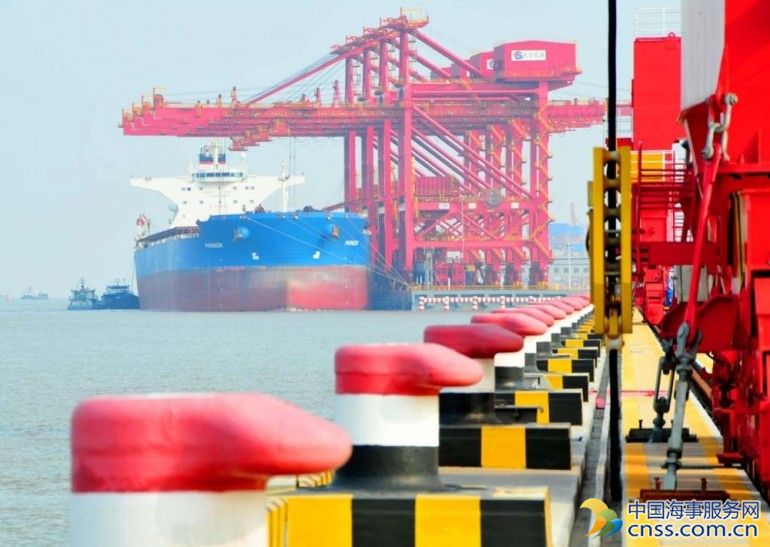Beijing pushes for consolidation to combat slumping figures

The ports sector is following a host of other industries in China by being coerced to join forces, writes Katherine Si.
Whatever the sector shipping is going through a consolidation phase. Nowhere is this more acutely felt or on such a large scale as in the People’s Republic where the number of shipyards is contracting as huge mergers take place and shipping lines, even mighty Cosco and China Shipping, are thrown together. It’s not just shipping either. In China, major industrial concerns are being forced to betrothal as part of Beijing’s bid to cut overcapacity and increase industrial efficiency. This is true too for the ports sector.
The incredible buildup of infrastructure at ports up and down the Chinese coastline for the last 20 years needs refining now that the country has entered what has become in common parlance the new normal. Economic growth is not what it was – and China’s shipping needs are changing rapidly – ports in China need to be aware of this change and accept single digit growth at best for years to come.
The State Council moved this summer to kick start the consolidation phase of the nation’s sprawling ports sector. Port resources will be optimised at major port clusters, such as Bohai Bay, Yangzte river, Beibu Gulf, Fujian, the Pearl river delta, the Liaodong peninsula, North Jiangsu and Hainan Island.
The Liaoning peninsula will include port assets of Dandong, Dalian, Yingkou, Panjin and Huludao. The regional port assets optimisation will be led by Dalian port as it pushed its Northeast Asia international shipping hub credentials.
The Bohai Bay area will include the port assets of Qinhuangdao, Tanshan, Cangzhou and Tianjin.
The Shandong peninsula will cover several port cities in Shandong province, including Binzhou, Dongying, Weifang, Yantai, Weihai, Rizhao and Qingdao.
The northern Jiangsu province sector will include Lianyungang and Yancheng.
The Yangzte river area will include Nantong, Shanghai, Jiaxing, Hangzhou, Shaoxing, Ningbo, Zhoushan and Taizhou in Zhejiang province, with Shanghai very much pulling the strings here.
Professor Liu Bin, director of the World Economic Research Institute of Dalian Maritime University, comments on all these changes. “The Chinese ports are likely to be integrated into bigger port groups and have some regional features, such as a Yangtze river port group, and a Bohai Bay port group,” he says.
“The growth pace of the domestic economy is slowing down. Port throughput will also decrease slowly. In the coming five years, most of the Chinese ports will see negative growth of the cargo throughput, that should be a good reason to push the reform and integration on the port assets,” Liu says.
What is happening in China with regards port integration has been mirrored the world over from more developed economies. Japan wrestled with the same issues last decade – forming super ports to counter declining throughput, while in Europe there are countless examples of ports being pushed together to share resources and make a better case for ships coming to call.
For China, in the long run, port consolidation is all about having a mature economy, nevertheless many rice bowls will be broken in the coming months as local fiefdoms are wrought under regional control.
HEADLINES
- Do shipping markets want Biden or Trump for the win?
- All 18 crew safe after fire on Japanese-owned tanker off Singapore
- Singapore launching $44m co-investment initiative for maritime tech start-ups
- Cosco debuts Global Shipping Industry Chain Cooperation Initiative
- US warns of more shipping sanctions
- China continues seaport consolidation as Dalian offer goes unconditional